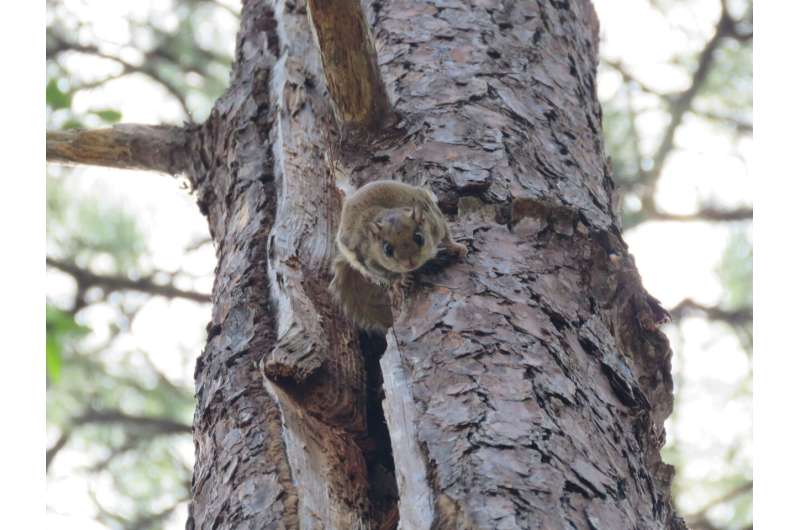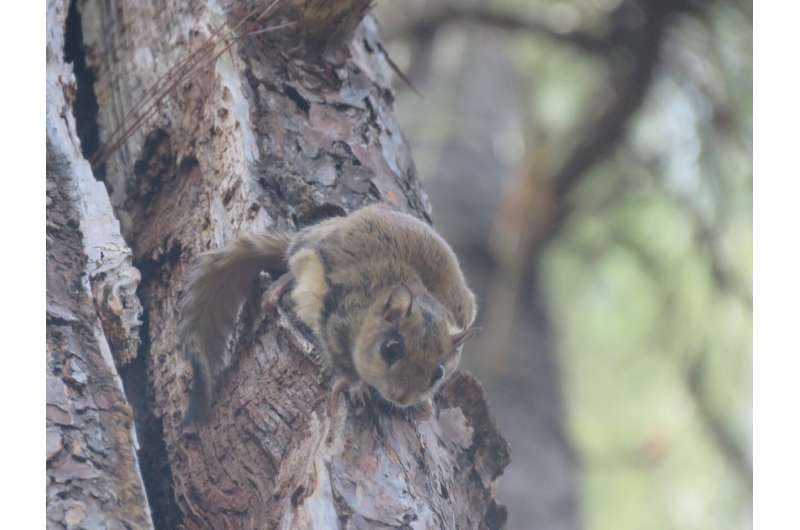Southern flying squirrel rediscovered in Honduras after 43 years

The presence of the southern flying squirrel (Glaucomys volans) was documented in Honduras for the first time after 43 years. The record is from a site of the forest management plan called “Las Lechuzas,” municipality of Concordia, department of Olancho. Apart from this newly confirmed location, the species has also been recorded in Zambrano, department of Francisco Morazán in 1935, in Gracias, department of Lempira, and finally in the Department of paradise in 1979. Based on these records, Honduras is considered the southernmost distribution known for this species.
The discovery was possible thanks to a project of El Aserradero Sansone, a company focused on sustainable forestry activities in Honduras, and is published in a research article in Check List.
This finding confirmed that there is at least one population of G. volans in the country, at the Las Lechuzas site, which is currently also the southernmost locality known in its global distribution. The species has been assessed as Least Concern by the IUCN (meaning it has stable populations), but is considered Data Deficient on the Red List of Honduran species. Considering the low number of records and the high rate of destruction of pine forests in Honduras, G. volans is a priority for conservation in the country.
In support of the conservation of the biodiversity of Las Lechuzas, the company Sansone is now committed to giving priority to the conservation of G. volans in the area. The use of artificial shelters for G. volans is also being studied, as the animal is at greater risk when its nests are disturbed.
Based on recommendations suggested in the study, Sansone will work to increase the quantity and quality of tree seedlings that will grow in the canopy and educate people in the community about the need to protect pine ecosystems and rare animals. Additionally, within the 3,139.62 ha of the management plan of Las Lechuzas, there are 836.63 ha that have been declared as hydrological protection zones. Currently, there is no record of G. volans in any protected area of Honduras.
“As a professional with an experience of 43 years, I capitalize on the detection of the Flying Squirrel as an event that opens the doors to the true dimension posed by the Honduran forest law in the proper administrative management. That includes biodiversity conservation and protection and rationality of the protection of natural resources. The latter turns out to be of greater importance in view of the strong social pressures in favor of the conversion of the use of forest land destined for extensive agriculture and livestock, as well as the environmental impacts caused by climate change that is being sustained by the mismanagement of our resources,” says José Muñoz, one of the authors in the study.

More information:
Manfredo A. Turcios-Casco et al, Unseen for 43 years! A new occurrence of Glaucomys volans (Linnaeus, 1758) (Rodentia, Sciuridae) in Honduras, Check List (2023). DOI: 10.15560/19.1.133
Citation:
Southern flying squirrel rediscovered in Honduras after 43 years (2023, March 24)
retrieved 24 March 2023
from https://phys.org/news/2023-03-southern-flying-squirrel-rediscovered-honduras.html
This document is subject to copyright. Apart from any fair dealing for the purpose of private study or research, no
part may be reproduced without the written permission. The content is provided for information purposes only.
For all the latest Science News Click Here
For the latest news and updates, follow us on Google News.

